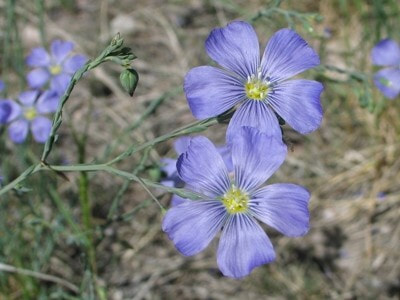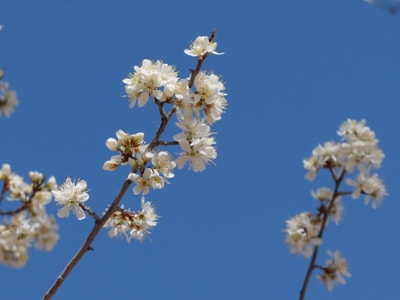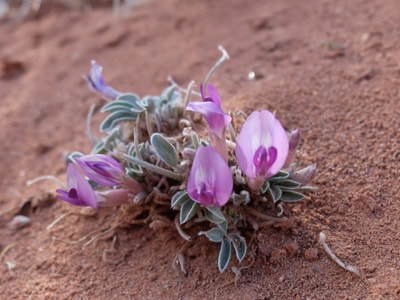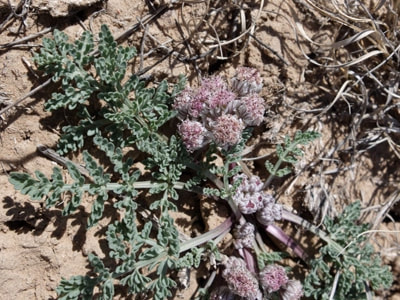|
Found in dry meadows, slopes
Seen blooming in May in Abiquiu Blue Flax grows to over two feet tall with wiry, slender stems branching out from the base. It often can be found growing in large patches. Leaves are small and grayish-green. Flowers are one inch across and open in the morning for just one day. Color varies from pale blue to almost purple with a silky sheen. Native Americans consumed the seeds for their flavor and nutrients. A tea made from the stems and leaves was used to treat various medical problems such as eye infections, stomach disorders, and swellings. Livestock exhibits a state of drowsiness when feeding on Blue Flax. Blue Flax was used to make strong rope. Today a cultivated flax is still grown for its "linen" fiber and "linseed oil". Source. If you trying to identify a different flower then you can check what other flowers bloom this month. If you cannot identify a flower from the website send a photo and where you took it to contact@rockymountainsflora.com. Read online for tips.
0 Comments
Found in moist areas, ditches, canyons
Seen blooming in April by the Tierra Azul Acequia, Abiquiu The Wild Plum grows to 15 feet tall as a small tree or as a large shrub forming thickets. The branches are thorny and the leaves are finely toothed. The upper surface of the leaves is dark green, the underside is pale. Pure white flowers bloom before the leaves in round clusters and have five petals and a slightly unpleasant fragrance. Flowers are followed by round fruits, plums, one inch across which can be yellow or red. Although the plums can be eaten raw, the quality is somewhat poor, the fruits are better used for preserves and jellies. Wild plums have toxic substances in all parts of the plant except the fruit but traditionally many parts are used for medicinal purposes. A tea made from the inner bark is used as a wash to treat various skin problems and as a mouth wash to treat sores, a poultice of the inner bark is disinfectant and is used as a treatment on cuts and wounds, it has been used to make a cough syrup and an infusion has been used in the treatment of diarrhea, kidney, bladder complaints and in the treatment of asthma. It also works well as a mild laxative. A green dye was made from the leaves and a red dye from the roots. Source. Golden Currant, Buffalo Currant, Clove Bush,Ribes aureum,Gooseberry Family (Grossulariaceae)4/24/2020 Found in open woods, ditches, fencerows
Seen blooming in April off Hwy 554 Golden Currant is a non-spiny shrub with stems 4 to 5 feet tall and lobed leaves. The sweetly scented flowers are tubular, about 1 inch long and golden-yellow when fresh, but turn orangish to violet with age. The berries produced are golden turning to red or black and are edible. Also known as Buffalo Currant, it was an important food source for the Plains Indians. The fruits were eaten fresh or dried and mixed with dried buffalo meat or venison to make pemmican. The berries can also be converted into jams and jellies. Numerous animal species consume the fruits and nectar-loving birds such as orioles have been observed eating the flowers. Source. If you trying to identify a different flower then you can check what other flower bloom this month. If you cannot identify a flower from the website send a photo and where you took it to contact@rockymountainsflora.com. Read online for tips. Found in sandy, dry areas
Seen blooming in April in Red Wash Canyon This beautiful little plant grows low to the ground with 5 to 11 silky leaflets. Flowers are showy, bright pink/purple with a lighter center and over 1" long. Seed pods are curved and covered in silky, white hairs. The Astragalus genus is very large and individual species are usually identified by their seed pod rather than their flower or leaves. Many varieties of Milkvetch grow in this area. Specific uses for Newberry’s Milkvetch are unknown, but other species in the Astragalus genus have many uses. The plant is considered poisonous, especially to stock and horses, however, medicinally a decoction of the whole plant is used as a wash for the head, hair and whole body, the plant is used for stomach disorders and as a gargle for sore throats, a poultice of crushed leaves is applied as an ointment for animals with urination troubles, an infusion of the root is used as a wash for sores, granulated eyelids and toothaches, also seeds are used for food, and pounded seeds are mixed with other foods and used as a spice. Source. If you trying to identify a different flower then you can check what other flower bloom this month. If you cannot identify a flower from the website send a photo and where you took it to contact@rockymountainsflora.com. Read online for tips. Found on dry, sandy, gravelly slopes
Seen in March and April in Plaza Blanca Spring Parsleys are early bloomers with fleshy, pale grey-green leaves divided into lobed leaflets and branched flower heads surrounded by papery bracts which have purplish veins. Flowers are dull-white or purplish with long, purple-tipped stamens. It grows close to the ground with flower stems up to 5" long. Leaves are divided into 3-6 pairs of leaflets. Traditionally the plant was eaten like celery and the large roots were ground into flour to make bread and biscuits giving these plants the common name of biscuitroot. Source. If you trying to identify a different flower then you can check what other flower bloom this month. If you cannot identify a flower from the website send a photo and where you took it to contact@rockymountainsflora.com. Read online for tips. |
AuthorI am Marilyn Phillips, a native of England, whose love of nature and the outdoors from childhood brought me by a circuitous route to Crested Butte, Colorado in 1993 and 16 years later to northern New Mexico. My exploration of the many trails in these areas, my interest in wildflowers and photography, and career in computer system design came together in this creation. If you have any corrections, comments or questions, please contact me by email. Archives
September 2024
Categoriescopyright © 2020
|







 RSS Feed
RSS Feed